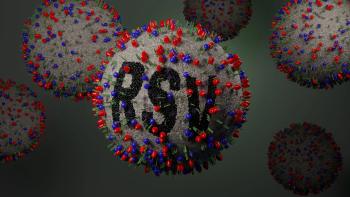
Gastrointestinal Symptoms Could Be New Focus for Coronavirus Diagnosis
Two new papers highlight the importance of the gastrointestinal tract in symptoms and spread of coronavirus.
Novel coronavirus symptoms seem to be mostly focused on fever and cough, but gastrointestinal symptoms should be a new focus for clinicians, according to 2 new papers published online in Gastroenterology.
The
Former studies on SARS, which is related to the coronavirus and can present with similar symptoms, showed that SARS was verified in patients after detection in biopsy specimens and stool. This was true even after the patients had been discharged from the hospital.
The study authors noted that the
Another similarity the study authors noted between SARS and COVID-19 is that mild to moderate liver injury has existed in patients. Little is known about coronavirus infection in the liver but SARS in liver tissue confirmed coronavirus direct infection in livers, they said.
In the
The age of the patients ranged from 10 months to 78 years old, the investigators said. The duration of positive stool tests ranged from 1 to 12 days, they added, and patients remained positive via stool tests after showing negative in respiratory samples.
The study authors said that viral host receptor ACE2 stained positive primarily in the gastrointestinal epithelial cells, which is rare. ACE2 is “abundantly distributed in cilia of glandular epithelia,” the study authors said, but rarely expressed in esophageal epithelium. This is likely due to esophageal epithelium mainly being composed of squamous epithelial cells, which express less ACE2 than glandular epithelial cells.
Although the first study suggests that the infectious virions can be released into the gastrointestinal tract, the second paper suggests that fecal-oral transmission could be a path for viral spread.
“Preventing fecal-oral transmission should be taken into consideration to control the spread of the virus,” the second study’s authors wrote. “Our results highlight the clinical significance of testing viral RNA in feces by rRT-PCR since infectious virions released from gastrointestinal tract can be monitored by the test.”
Guidelines from the US Centers for Disease Control and Prevention recommend discontinuing rRT-PCR testing for coronavirus patients after 2 sequential respiratory tract specimens collected greater than 24 hours apart come back negative. However, the investigators noted that they observed more than 20% of their patients had viral RNA that remained positive even after respiratory tract tests indicated negative results.
“Therefore, we strongly recommend that rRT-PCR testing for coronavirus from feces should be performed routinely in coronavirus patients, and Transmission-Based Precautions for hospitalized coronavirus patients should continue if feces tests positive by rRT-PCR testing.”
Newsletter
Stay ahead of emerging infectious disease threats with expert insights and breaking research. Subscribe now to get updates delivered straight to your inbox.




























































































































































































































































































